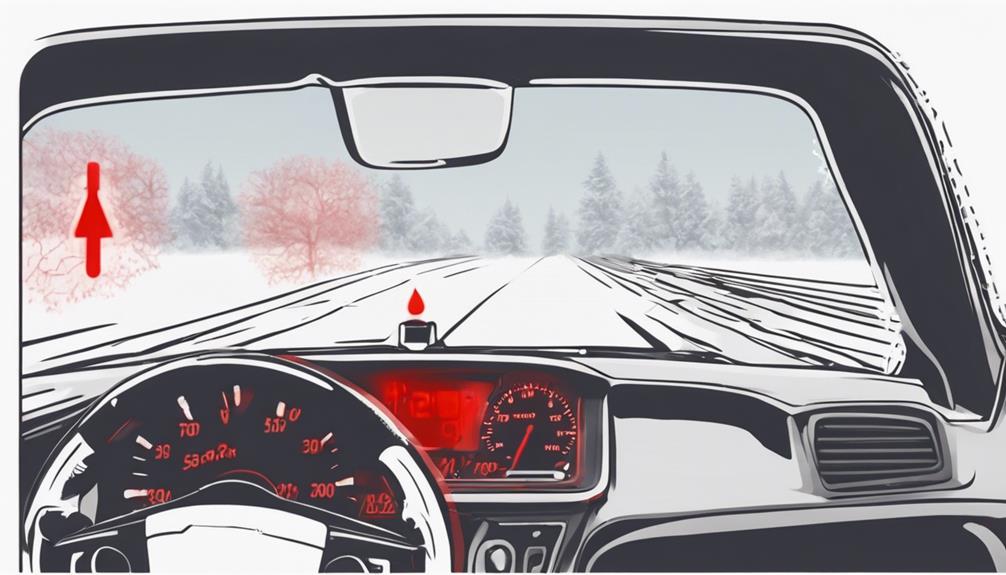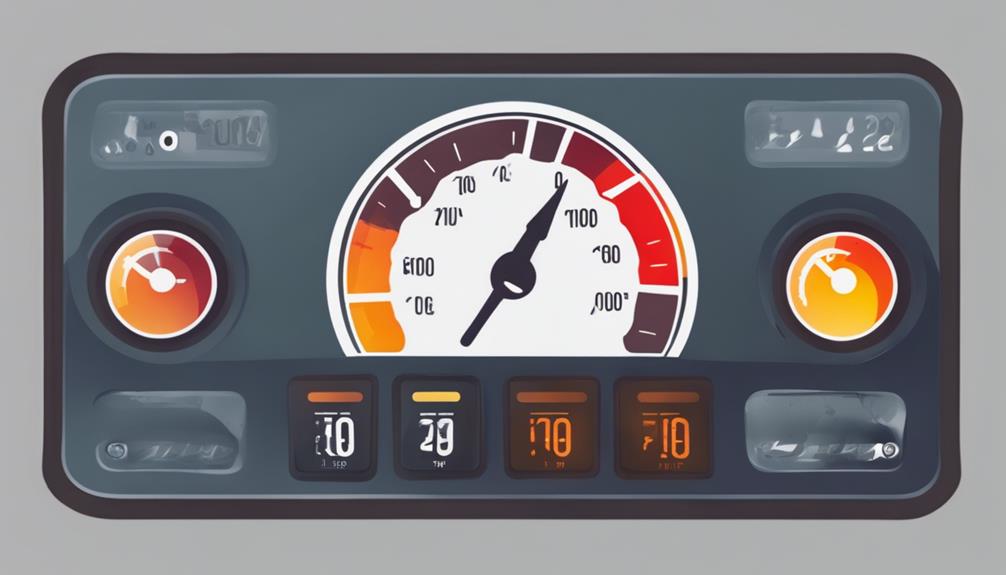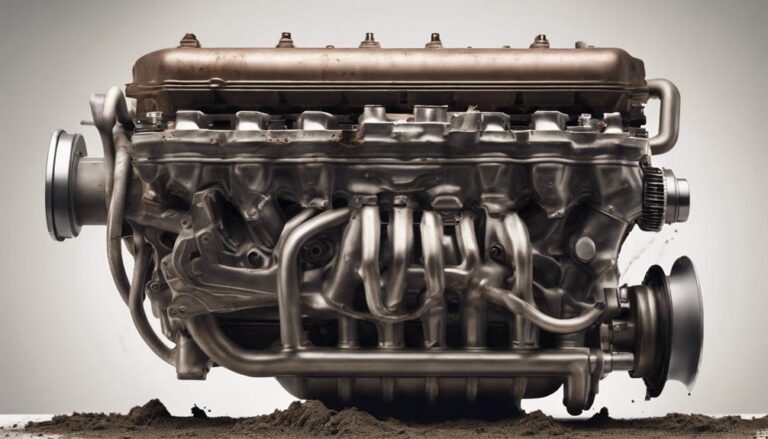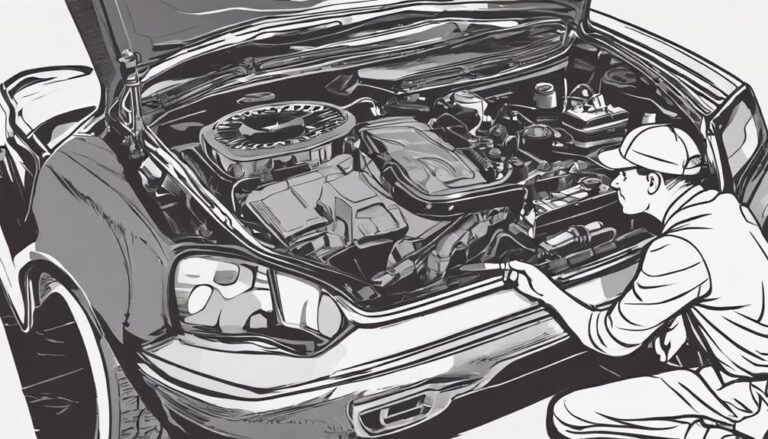5 Red Flags of a Failing Heater Core
If your car's heater core is the heart of its heating system, then it's important to recognize the warning signs of a failing one. Imagine driving through a cold winter night, only to find your heater blowing cold air instead of warmth, leaving you shivering in the driver's seat.
But that's just the tip of the iceberg when it comes to potential issues. Stay tuned to uncover the other four red flags that could signal a failing heater core and prevent a chilly surprise in your vehicle.
Key Takeaways
- Weak or no heat, sweet smell, and foggy windows indicate potential heater core issues.
- Coolant leaks on the passenger side can be a sign of a failing heater core.
- Unusual engine temperature fluctuations may signal problems with the heater core.
- Promptly address heater core problems to ensure safety and comfort in your vehicle.
Weak or No Heat Inside Vehicle

If your heater is blowing cold air or no heat at all inside your vehicle, it could be a sign of a failing heater core. The heater core is a crucial component of your vehicle's heating system responsible for providing warmth in the cabin. When it malfunctions, it can lead to a lack of adequate heat circulation, causing discomfort during cold weather.
To address this issue, heater core replacement may be necessary. This process involves removing the old, faulty heater core and installing a new one to restore proper heating functionality to your vehicle. It's a detailed procedure that requires precision and expertise to make sure the heating system operates efficiently.
Regular heating system maintenance can help prevent heater core issues. By making sure that your coolant is clean and at the appropriate level, you can prolong the lifespan of your heater core and prevent unexpected failures. Remember, maintaining your heating system is crucial for a comfortable driving experience during colder months.
Sweet Smell in the Cabin
Experiencing a sweet smell in the cabin can indicate a potential issue with your vehicle's heater core. This distinct scent is often a sign of coolant leaking from the heater core, which is a vital component responsible for heating the interior of your vehicle. Ignoring this warning sign can lead to further damage and potential safety hazards. To help you understand the seriousness of this issue, here are some key points to take into account:
| Maintenance Tips | Troubleshooting |
|---|---|
| Regularly check for any unusual odors in the cabin. | If you notice a sweet smell, inspect the floor mats and under the dashboard for signs of coolant leakage. |
| Ensure your vehicle's cooling system is properly maintained. | Check the heater core for any visible cracks or leaks. |
| Flush the cooling system at recommended intervals. | Monitor the coolant levels to guarantee proper functioning. |
| Address any leaks promptly to prevent damage to the heater core. | Seek professional help if you are unable to locate the source of the odor. |
| Use high-quality coolant to prevent corrosion and leaks. | Take into account a heater core replacement if the issue persists. |
Understanding these maintenance tips and troubleshooting techniques can help you address heater core issues promptly, potentially saving you from higher repair costs and ensuring a comfortable driving experience.
Foggy Windows or Windshield

When your vehicle's windows or windshield consistently appear foggy, it could signal a potential issue with the heater core. Window condensation and visibility issues are common symptoms of a failing heater core. The heater core is responsible for providing warm air to defrost your windows and windshield, so when it malfunctions, you may notice increased fogging that's difficult to clear.
Windshield fogging poses safety concerns as it impairs your visibility while driving. This reduced visibility can lead to accidents and jeopardize your safety on the road. If you find yourself constantly battling foggy windows despite trying various defogging methods, it's important to have your heater core inspected by a professional.
Don't overlook persistent fogging issues as they could indicate a deeper problem within your vehicle's heating system. By addressing these symptoms promptly, you can guarantee a clear view of the road ahead and maintain a safe driving environment for yourself and others.
Coolant Leaks on the Passenger Side
Coolant leaks on the passenger side typically indicate a potential issue with the heater core. When rusty connections or corroded pipes are present, they can lead to leaks in the coolant system. These leaks may manifest as damp carpets on the passenger side, a sweet smell inside the car, or visible coolant pooling on the floor.
Rusty connections can weaken over time due to exposure to moisture and heat, causing them to develop tiny cracks that allow coolant to escape. Similarly, corroded pipes can deteriorate, leading to leaks that compromise the efficiency of the heater core. It's important to address these leaks promptly to prevent further damage to the heating system and avoid overheating issues.
If you notice coolant leaks on the passenger side, it's advisable to have a professional inspect the heater core and associated components. By addressing rusty connections and corroded pipes early on, you can maintain the integrity of the cooling system and ensure the efficient functioning of your vehicle's heating system.
Unusual Engine Temperature Fluctuations

Unusual engine temperature fluctuations may indicate underlying issues with the heater core's functionality. When your vehicle's temperature gauge shows erratic behavior, it's essential to address this red flag promptly. Here are some key points to keep in mind for troubleshooting:
- Overheating Concerns: Sudden spikes or drops in engine temperature could be a sign of a failing heater core. It's important to investigate further to prevent potential damage to your vehicle's engine.
- Thermostat Malfunction: A faulty thermostat can cause temperature irregularities in your engine. If you notice inconsistent temperature readings, have the thermostat checked and replaced if necessary.
- Coolant Levels: Insufficient coolant levels can lead to temperature fluctuations in your engine. Make sure that your coolant levels are adequate and there are no leaks in the system that could be affecting the heater core's performance.
Frequently Asked Questions
How Often Should I Have My Heater Core Inspected or Replaced?
You should have your heater core inspected annually during routine maintenance visits. It's recommended to replace it every 8-10 years to prevent costly repairs. Regular inspections can help detect issues early, saving you money in the long run.
Can a Failing Heater Core Affect the Overall Performance of My Vehicle?
Regular heater core maintenance is important. A failing core can impact engine performance, causing overheating and coolant leaks. Addressing this promptly prevents further damage and guarantees peak vehicle operation. Stay proactive to maintain peak performance.
Are There Any DIY Methods to Temporarily Fix a Failing Heater Core?
When dealing with a failing heater core, temporary solutions like bypassing the core or using a stop leak product can be considered for emergency repairs. These quick fixes are DIY hacks to help you stay on the road.
What Are the Potential Risks of Driving With a Failing Heater Core?
Driving with a failing heater core poses risks to your safety. Engine overheating may occur due to coolant leaks. Address the issue promptly to prevent potential damage and guarantee a safe driving experience.
Are There Any Warning Signs That Indicate a Heater Core Is About to Fail, Before Experiencing Any of the Red Flags Mentioned in the Article?
Spotting subtle signs of a struggling heater core can save you substantial stress. Regularly check for foggy windows, sweet smells, or coolant leaks. Swift preventive maintenance can sidestep costly repairs. Stay savvy with maintenance tips!
Conclusion
If you notice any of these red flags in your vehicle, it may be a sign of a failing heater core. Ignoring these warning signs could lead to costly repairs or even engine damage.
Don't wait until it's too late. Take action now to make sure your vehicle's heater core is functioning properly.
Stay alert and proactive to avoid being left out in the cold.







